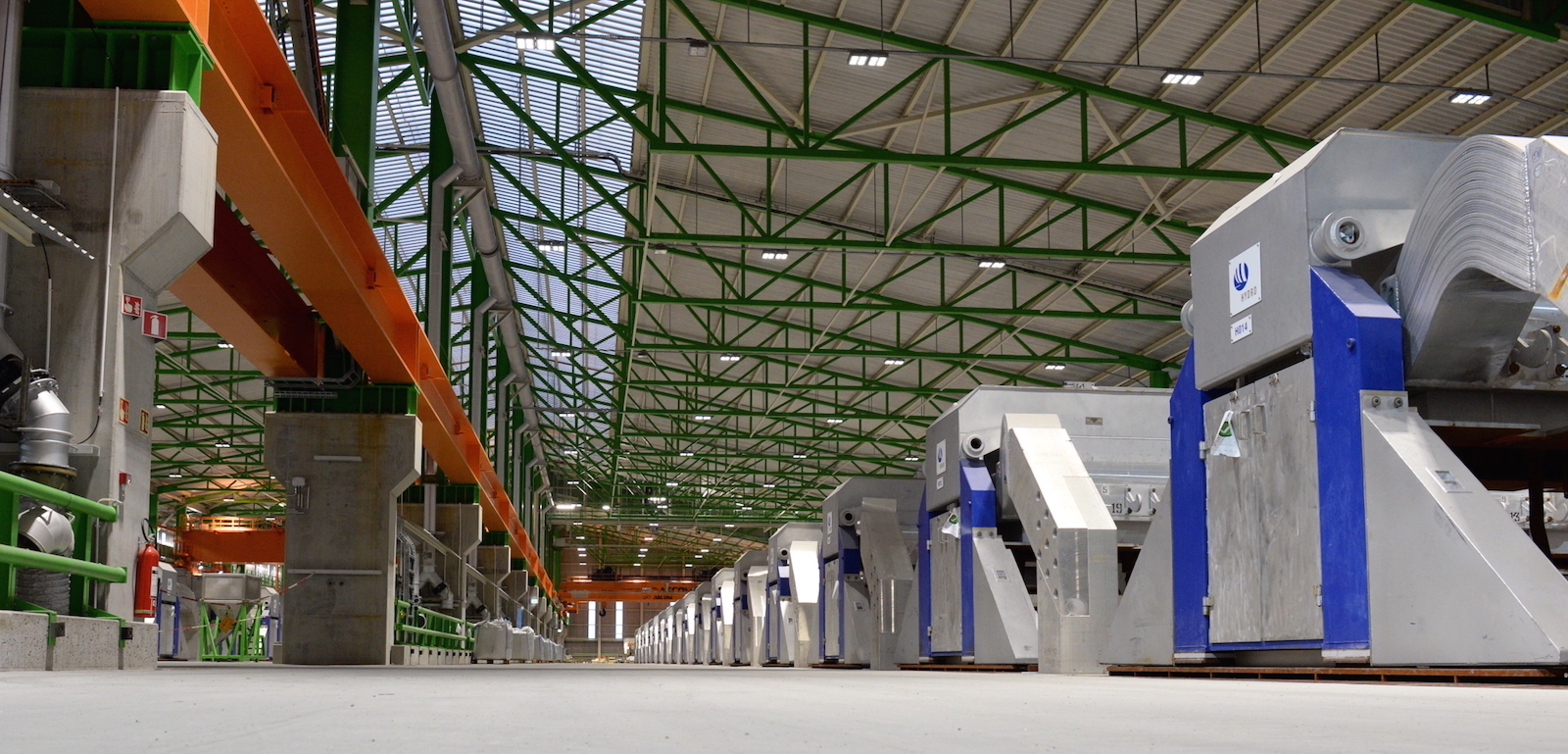
By Andrea Svendsen, Managing Editor.
Hydro produced the first aluminum metal at its Karmøy Technology Pilot plant in Norway in January (Figure 1), where they aim to achieve the most climate and energy efficient aluminum smelting technology in the world. The HAL4e and HAL4e Ultra technology launched in Karmøy will use 15% less energy during production and have the lowest CO2 footprint compared to the world average. The start up of production enables Hydro to begin verifying the new cell technology at an industrial scale, while increasing production by 75,000 tpy. The pilot contributes to Hydro’s ambition to increase its annual primary aluminum capacity by 200,000 tonnes by 2025 and to achieve its goal of becoming carbon neutral by 2020.
“The technology Hydro has developed represents a quantum leap for climate-friendly and green industry,” said Svein Richard Brandtzæg, Hydro president and ceo. “This is a technological breakthrough. No one has managed to produce aluminum with such low energy consumption and high productivity as Hydro will at full-scale production.”
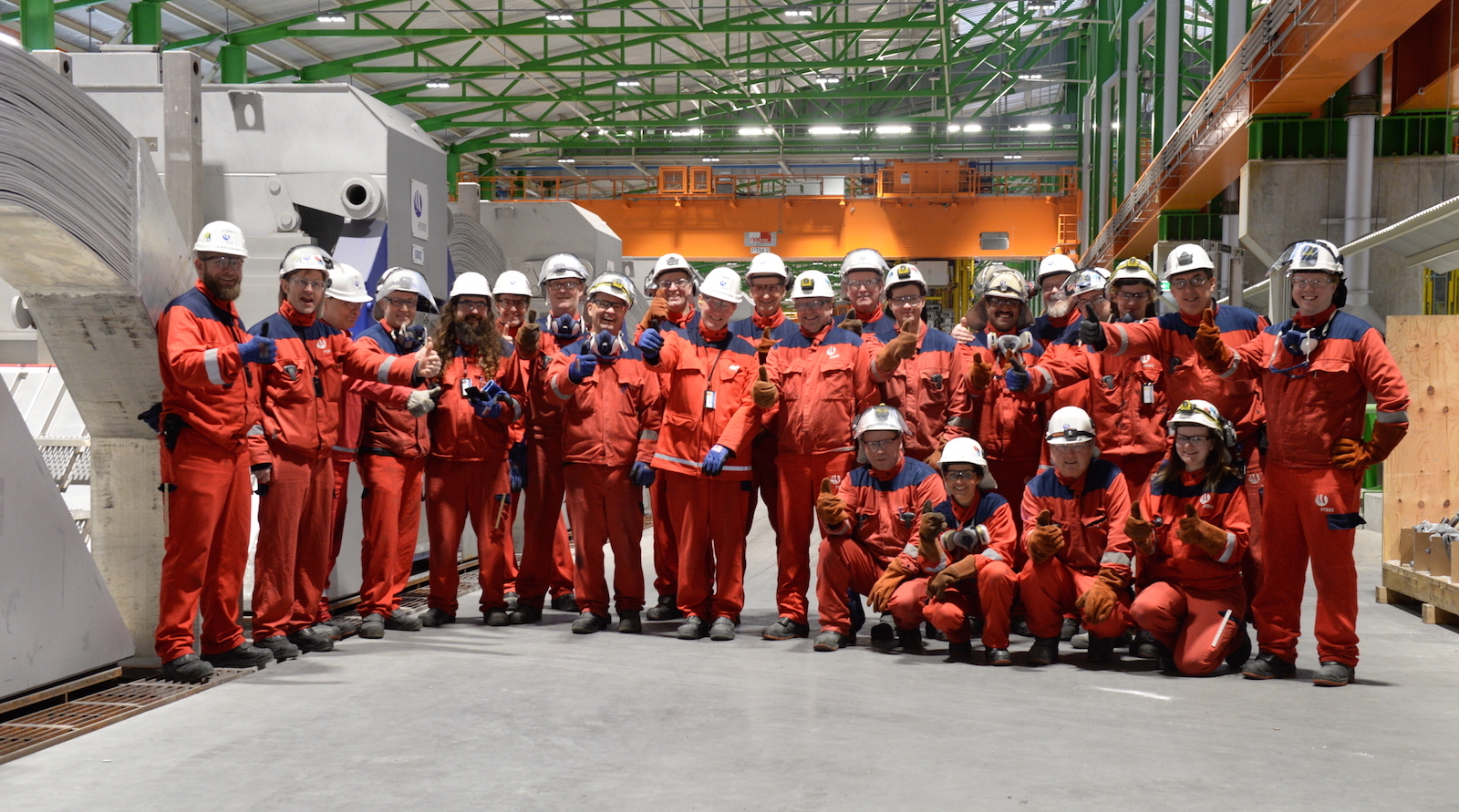
Development of HAL4e
Hydro has a long history of research and development in the aluminum industry, with its cooperation with Alcan to develop ÅSV 170 in the 1970s being the foundation of Norwegian reduction technology development. Since then, Hydro has continued to advance its pot cell technology to improve energy efficiency and the quality of the metal, utilizing its strong cooperation with the Norwegian University of Science and Technology in Trondheim. Such developments include HAL220 (implemented at Høyanger, Norway, in 1981), HAL230 (implemented at Venalum, Venezuela, in 1988 and Slovalco, Slovakia, in 1995), and HAL300 (implemented at Qatalum, Qatar, in 2009).
Envisioning a technology with a maximum energy consumption of 10 kWh/kg Al produced, Hydro management aimed to push the technology further in order meet the company’s sustainability aspirations and improve competitiveness with reduced energy costs. In 2004, the company launched a project that resulted in the development of the HAL4e and HAL4e Ultra cell technology.
“10 kWh has been regarded as unrealistic by many industry colleagues, i.e. a true vision, but inspiring for academia and Hydro researchers,” said Asgeir Bardal, Hydro program manager, who led the development of the HAL4e cells. “There is still a long way to go, but HAL4e Ultra cells are a step change for a mature technology, in particular considering the compactness and high productivity/current density in the cells.”
The development of the new cell technology was a company wide effort, with teams of researchers from Årdal, Karmøy, and Porsgrunn, Norway, and Neuss, Germany, pooling their knowledge. Each research center contributed its own strong technical focus, with Årdal providing cell design, process control, and electrolysis; Porsgrunn offering materials science and environmental technology; and Neuss offering modeling and engineering. “Use of mathematical models to illustrate problems in an industrial way provided superior models for both the design and operation of the cell technology,” said Johannes Aalbu, head of Technology in Primary Metal, Hydro.
First test cells for the HAL4e technology were built at the Årdal research center in 2008 (Figure 2). This was followed by optimization, validation, and development of HAL4e Ultra cells, conducted through to 2016. The main parameters of the HAL4e technology are a low anode-cathode interpolar distance (due to control of the magnetic field), low-ohmic solutions, and an advanced process control system.
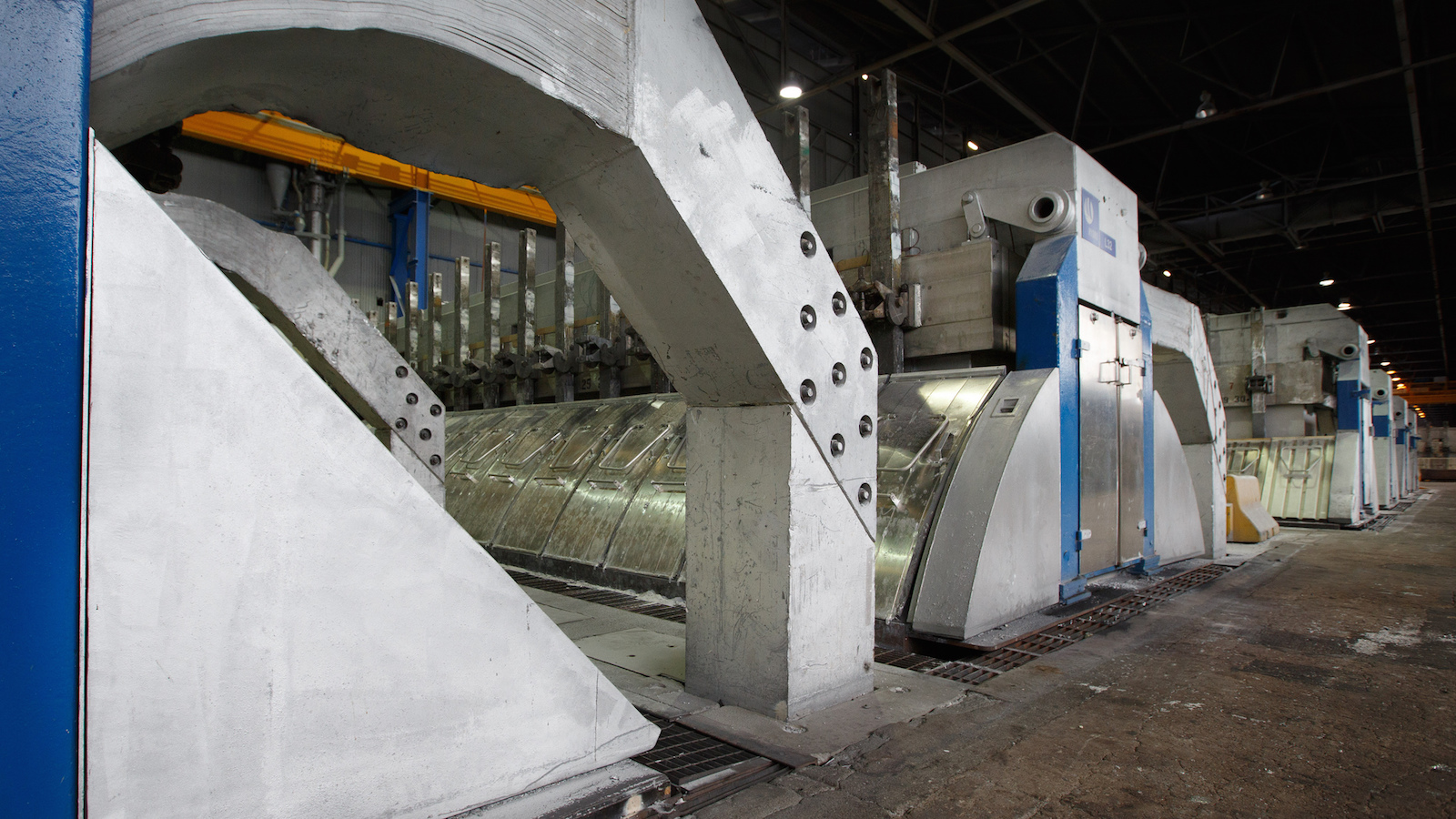
“The true innovation is the unique combination of low energy consumption, high current density (i.e., high productivity), low CAPEX (due to its compact footprint), and low emissions,” explained Hans Erik Vatne, chief technology officer, Hydro. “This includes a good understanding and control of magnetic fields and milli-volt chasing to reduce ohmic resistance.”
According to Vatne, the compact footprint of the HAL4e cells creates its own challenges, as the 450 kA of energy that passes through a cell creates a strong electromagnetic field, which can disrupt the neighboring cell. Hydro researchers were able to develop the technology in such a way as to tame the electromagnetic forces inside the cell and stabilize the bath, which allowed the technology to achieve the desired reduction in energy consumption.
Another key aspect of the HAL4e project was the development of a proprietary process control system (Figure 3), which provides stable cell operation and control of alumina additions. This system enables Hydro to manage heat balance, precisely add alumina, and keep energy waste to a minimum. Laser technology is also implemented to monitor and limit emissions. “Our pot control system is essentially a digital twin, i.e. a complete digital/numerical simulation of the electrolysis process,” said Vatne. “It utilizes state-of-the-art physical models; sensors and measurements coupled directly to the model to calibrate and adjust it; and advanced analytics, machine-learning algorithms to further optimize the model and the understanding of the electrolysis process.”
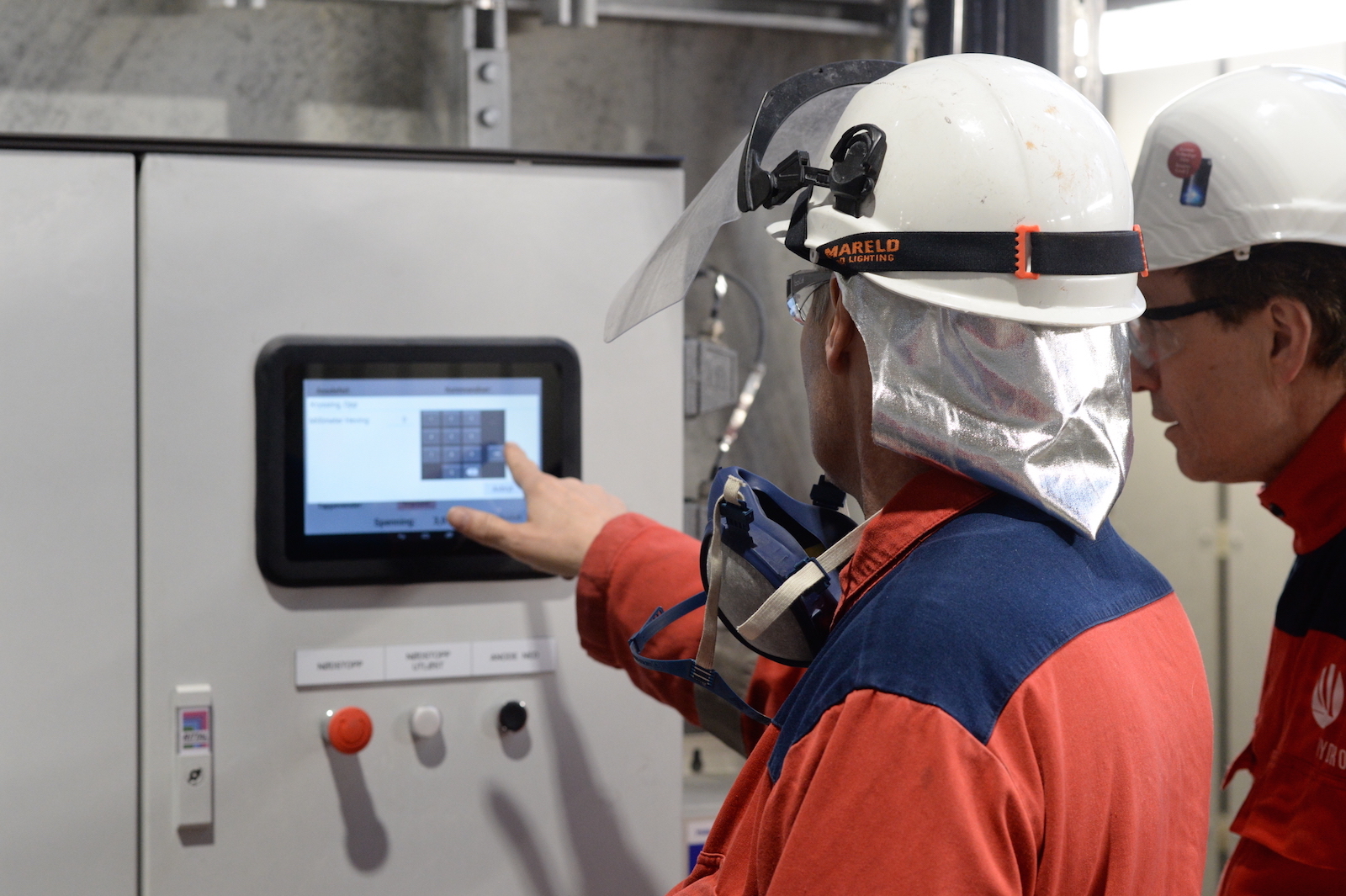
Further work on the process control system is ongoing. “We have prototype cells with individual anode current measurements at the Årdal research center, but the technology is not yet ready for implementation in the technology pilot at Karmøy,” explained Martin Segatz, Hydro program manager, who is leading the development of the HAL4e Ultra cells.
Other technologies being developed by the researchers include environmental boxes for butt handling and a distributed pot suction system.
The research and development of the HAL4e and HAL4e Ultra cells culminated in the construction, inauguration, and startup of the Karmøy pilot facility, where these technologies will be further tested at an industrial scale. In addition, the facility will test new anodes and raw materials in the aim of achieving the most energy efficient aluminum production in the world.
Technology Pilot
The Karmøy Technology Pilot (Figure 4) was constructed adjacent to Hydro’s existing primary aluminum plant in Karmøy, which marked 50 years of production in 2017. The facility includes the smelter and three casthouses (billet and sheet for the construction and automotive industries, and wire rod for high voltage lines), and a rolling mill, as well as a research and development center. The pilot facility adds 75,000 tpy of aluminum production to the existing capacity of approximately 200,000 tonnes, increasing total production capacity by 40%. Energy supply for the Karmøy facility is through hydropower, which contributes to the low carbon footprint of the site.
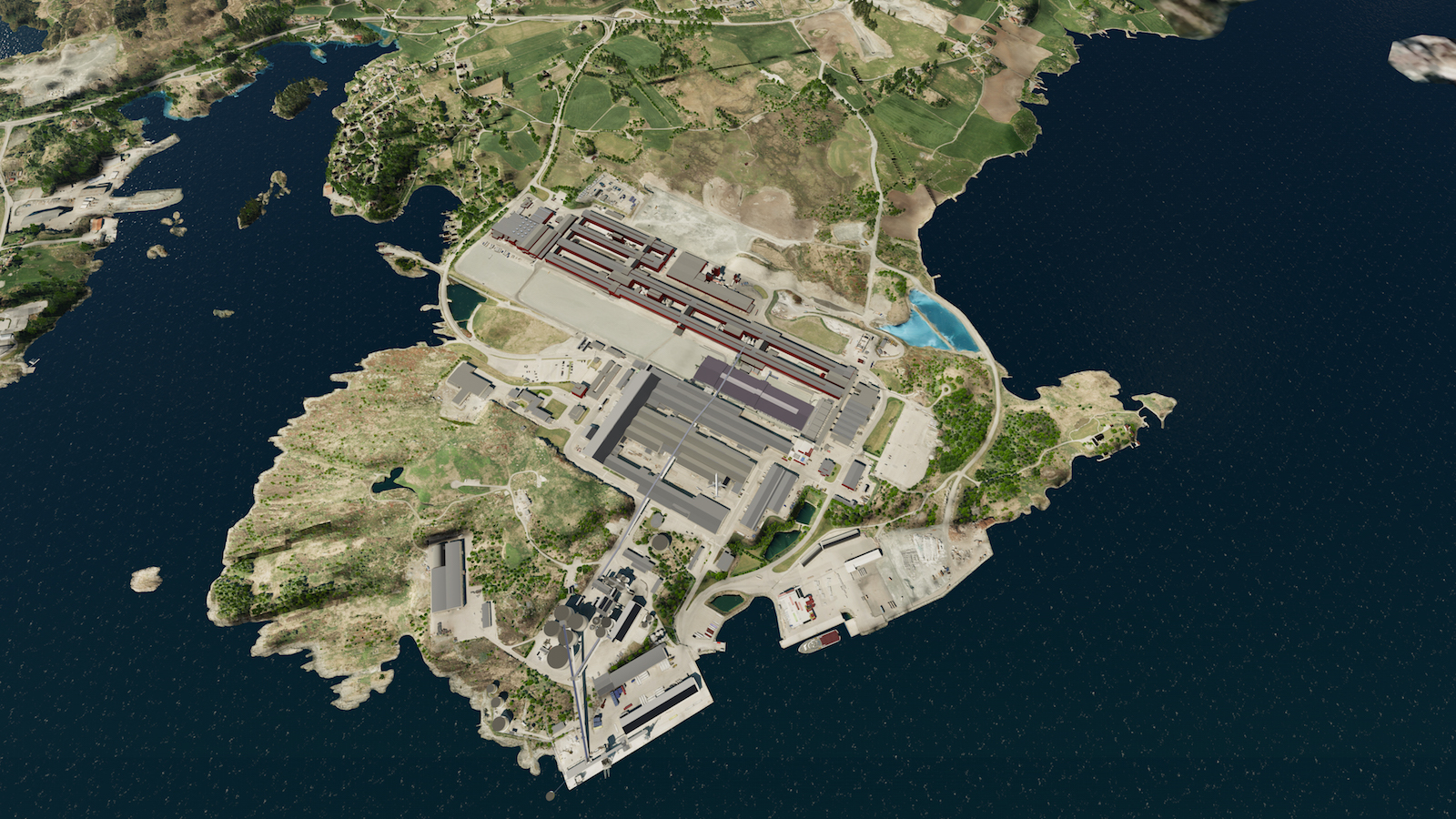
The full-scale pilot cost an estimated NOK 4.3 billion (US$544 million), and received funding support from government agencies. Enova, a public enterprise that supports new energy and climate-related technology development, agreed to contribute NOK 1.6 billion (US$190 million), while Innovation Norway provided NOK 22.5 million (US$2.8 million).
“The pilot is built on the premises of the old Søderberg electrolysis line that was closed down and demolished in 2009 for environmental reasons,” said Vatne. “A completely new building was constructed and this area of the plant has been transformed from a low industry standard to an industry benchmark level.”
Multiconsult was hired to provide the engineering services for the project, including demolition work and construction of a new potroom, rectifier and transformer substations, power distribution, infrastructure, and support systems. NKM Noell Special Cranes GmbH supplied three pot tending machines and a transfer gantry system.
The pilot facility consists of 60 new pot cells, of which 48 are dedicated to industrial-scale testing of HAL4e technology. HAL4e operates at 450 kA with an energy consumption of 12.3 kWh/kg Al (with 95% current efficiency)—well under the world average of 14.1 kWh/kg aluminum and Hydro’s own average of 13.8 kWh/kg aluminum. In addition, the cells will provide continued high productivity. Compared with the current level of technology used in Hydro’s plants in Sunndal (Su4) and Qatar (HAL300), the new pots at Karmøy will be 50% larger and produce 50% more metal from each pot.
The remaining 12 test cells under development at Karmøy will be of HAL4e Ultra technology. These cells were installed based on the identical technology platform as the HAL4e cells, but operate with a somewhat lower amperage (in the range of 415-450 kA). Hydro expects the HAL4e Ultra technology to provide an energy consumption as low as 11.5-11.8 kWh/kg Al—a capability that no other smelting technology has thus far been able to achieve. The cells will also be used to implement new elements that have a lower technology readiness level.
The pilot plant aims to also be a benchmark regarding emissions, with direct CO2 emissions being 0.8 kg lower per kilo of aluminum than the world average. Altogether, direct CO2 equivalent emissions are expected to be reduced to 1.40-1.45 kg CO2 equivalents per kg of aluminum—60,000 tonnes fewer per year.
Conclusion
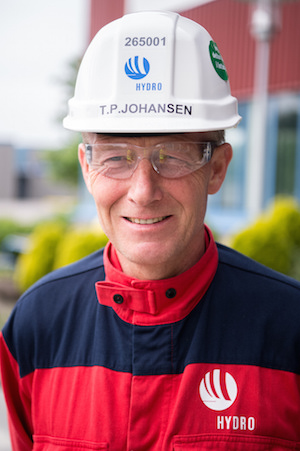
The Karmøy Technology Pilot has achieved a leading electrolysis technology, with low energy consumption, high productivity, and a low carbon footprint. “We are proud to have started production in the technology pilot. This is the culmination of a huge amount of work by colleagues from across the company. We feel a great sense of responsibility to ensure that this pilot becomes a success,” said Tom Petter Johansen (Figure 5), plant manager for Hydro Karmøy. In addition to increasing production, the pilot plant will add 50 new jobs for the local region. He added, “We have considerably invested in training to ensure that our colleagues are well-equipped for the new and demanding tasks in the technology pilot.”
Following the start of production in January, the company will now be working to ramp up all 60 cells through the spring and summer of this year. “Our focus over the next years will be to implement all of the physical technology [pot cells] and control platform elements into the existing smelter assets,” said Vatne. “The physical elements will be implemented in connection with new cathode generations, while control system upgrades will be done continuously.”
Several of the elements from the HAL4e technology can be spun off from the pilot and utilized in Hydro’s other existing production lines to improve productivity and operational stability. “What we are building now is a high-tech pilot for the future, with the world’s most energy and climate-efficient aluminum production,” said Brandtzæg at the inauguration of the pilot plant. “The pilot will show the way not only for Karmøy, but for all our plants in Norway and around the world. This is a pilot for all of Hydro, for the growth of a future-oriented industry here in Norway, and for the global climate—and I’m most proud of all our highly skilled employees who have made this possible.”
Editor’s Note: This article first appeared in the February 2018 issue of Light Metal Age. To read more articles from this issue, please subscribe.
